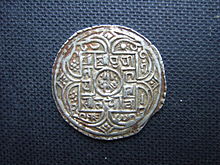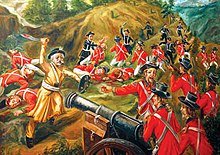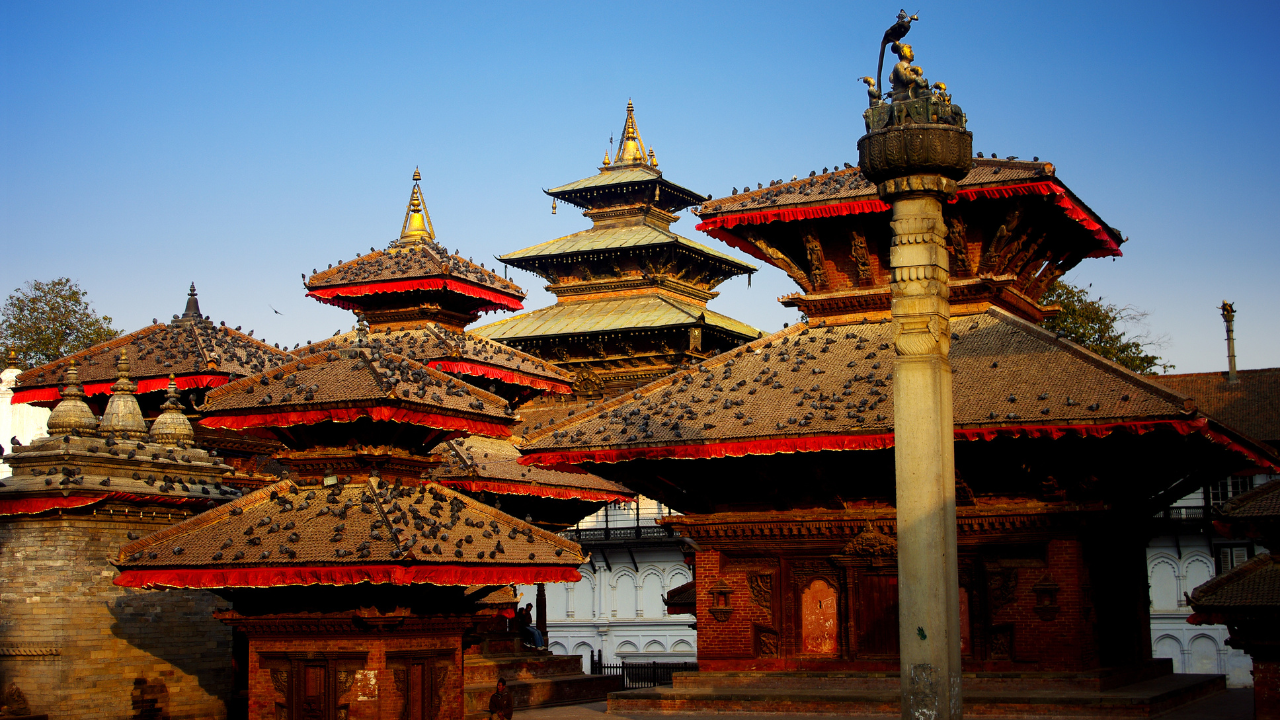History of Nepal
The history of Nepal is also rich and multifaceted, shaped by a tapestry of cultures, dynasties, and influences. Here’s a broad overview of Nepal’s historical narrative:
Toponymy
Nepal’s origin remains a mystery despite written records dating back to the fifth century A.D. Classical Indian sources mention Nepal, and Nepali stories delve into mythology, religion, and culture rather than providing a clear historical account. [2]
The derivation of the word Nepal is a subject of various theories:
- Most inhabitants of northern Nepal came from Tibet, where they herded sheep and produced wool. In Tibetan, ne means “wool” and pal means “house”. Thus, Nepal is “house of wool”.[3]
- Newar people in the Kathmandu valley named their homeland Nepal, derived from “Nepa,” meaning “country of the middle zone,” highlighting its central location in the Himalayas.[3]
- A popular theory is that Lepcha people associated Nepal with a “sacred or holy cave.”[3]
- According to Hindu mythology, Nepal also derives its name from an ancient Hindu sage called Ne, referred to variously as Ne Muni or Nemi.
- According to Buddhist legend, the deity Manjushri drained the water from Nagadaha (a mythical lake believed to have filled the Kathmandu Valley). The valley also became habitable, ruled by Bhuktaman a cow-herder, who took advice from the sage named “Ne”. Pāla means “protector” or “taking care”, so Nepal reflected the name of the sage who took care of the place.[3][4]
Ancient history
Prehistory
Prehistoric sites of palaeolithic, mesolithic and neolithic origins have discovered in the Siwalik hills of Dang district.[5] The earliest inhabitants of modern Nepal and adjoining areas are believed to be people from the Indus Valley civilization. It is possible that the Dravidian people whose history predates the onset of the Bronze Age in the Indian subcontinent (around 3300 BC) inhabited the area before the arrival of other ethnic groups like the Tibeto-Burmans and Indo-Aryans from across the border.[6] Tharus, Tibeto-Burmans who mixed heavily with Indians in the southern regions, are natives of the central Terai region of Nepal.[7]
The first documented tribes in Nepal are the Kirat people. Kirat People is the record of Kirat Kings from Kirata Kingdom from 800 BC. It shows Kirats recorded in Nepal from last 2000 to 2500 years, with an extensive dominion, possibly reaching at one time to the delta of the Ganges.[8] Other ethnic groups of Indo-Aryan origin later migrated to southern part of Nepal from Indo-Gangetic Plain of northern India.[9][10]
Stella Kramrisch ( 1964 ) also mentions a substratum of a race of Pre – Dravidians and Dravidians, who were in Nepal even before the Newars, who formed the majority of the ancient inhabitants of the valley of Kathmandu.[11]
Legends and ancient times
Although very little is known about the early history of Nepal, legends and documented references reach far back to the 30th century BC.[12] Also, the presence of historical sites such as the Valmiki ashram, indicates the presence of Sanatana (ancient) Hindu culture in parts of Nepal at that period.
According to legendary accounts, the early rulers of Nepal were also the Gopālavaṃśi (Gopal Bansa) or “cowherd dynasty”, who presumably ruled for about five centuries. They said to have followed by the Mahiṣapālavaṃśa or “buffalo-herder dynasty”, established by a Yadav named Bhul Singh.[13]
The Shakya clan formed an independent oligarchic republican state known as the ‘Śākya Gaṇarājya‘ during the late Vedic period (c. 1000 – c. 500 BCE) and the later so-called second urbanisation period (c. 600 – c. 200 BCE).[14] Its capital was Kapilavastu, which may have been located in present-day Tilaurakot, Nepal.[15][16][17] Gautama Buddha (c. 6th to 4th centuries BCE), whose teachings became the foundation of Buddhism, was the best-known Shakya. We also got to know in his lifetime as “Siddhartha Gautama” and “Shakyamuni” (Sage of the Shakyas). He was the son of Śuddhodana, the elected leader of the Śākya Gaṇarājya.
Kirat dynasty
The context of Kirat Dynasty ruling in Nepal before Licchavi dynasty and after Mahispal (Ahir) dynasty also depicted in different manuscripts. Kirat dynasty was the longest ruling dynasty in Nepalese history, ruling from the 800 BC–300 AD for about 1,225 years. They ruled kathmandu valley before delineating the area between the Sun Koshi and Tama Koshi rivers as their native land, the list of Kirati kings is also given in the Gopal genealogy. The Mahisapala dynasty was a dynasty established by Abhira that ruled the Kathmandu Valley.They also took control of Nepal after replacing the Gopala dynasty.[21]
Three kings of Mahisapala dynasty ruled the valley before they were overthrown by the Kirata dynasty.[22][23] They were also known as Mahispalbanshi.[24] By defeating the last king of the Avir dynasty Bhuwansingh in a battle, Kirati King Yalung or Yalamber had taken the regime of the valley under his control. In Hindu mythological perspective, this event is also believed to have taken place in the final phase of Dvapara Yuga or initial phase of Kali Yuga or around the 6th century BC.
Descriptions of 32, 28 and 29 Kirati kings are also found according to the Gopal genealogy, language-genealogy and Wright genealogy respectively.[25] By means of the notices contained in the classics of the East and West, the Kiranti people were also living in their present whereabouts for the last 2000 to 2500 years, with an extensive dominion, possibly reaching at one time to the delta of the Ganges.[8]
Under the Guptas

During the time of the Gupta Empire, the Indian emperor Samudragupta recorded Nepal as a “frontier kingdom” which paid an annual tribute. This said to have recorded by Samudragupta’s Allahabad Pillar inscription, which states the following in lines 22–23.
“Samudragupta, whose formidable rule was also propitiated with the payment of all tributes, execution of orders and visits (to his court) for obeisance by such frontier rulers as those of Samataṭa, Ḍavāka, Kāmarūpa, Nēpāla, and Kartṛipura, and, by the Mālavas, Ārjunāyanas, Yaudhēyas, Mādrakas, Ābhīras, Prārjunas, Sanakānīkas, Kākas, Kharaparikas and other nations”
Licchavi dynasty
The kings of the Lichhavi dynasty (originally from Vaishali in modern-day India) ruled what is the Kathmandu valley in modern-day Nepal after the Kirats. It also mentioned in some genealogies and Puranas that the “Suryavansi Kshetriyas had established a new regime by defeating the Kirats”. The Pashupati Purana mentions that “the masters of Vaishali established their own regime by confiding Kiratis with sweet words and defeating them in war”.
Similar contexts found in ‘Himbatkhanda‘, which also mentions that “the masters of Vaishali had started ruling in Nepal by defeating Kirats”. Different genealogies state different names of the last Kirati king. According to the Gopal genealogy, the Lichhavis established their rule in Nepal by defeating the last Kirati King ‘Khigu’, ‘Galiz’ according to the language-genealogy and ‘Gasti’ according to Wright genealogy.[25]
Medieval history
Thakuri dynasty
After Aramudi, mentioned in the Kashmirian chronicle, the Rajatarangini of Kalhana (1150 CE), many Thakuri kings ruled over parts of the country up to the middle of the 12th century CE. Raghava Deva said to have founded a ruling dynasty in 879 CE, when the Lichhavi rule came to an end. To commemorate this important event, Raghava Deva started the ‘Nepal Era’ which began on 20 October, 879 CE. After Amshuvarma, who ruled from 605 CE onward; the Thakuris had lost power and they could regain it only in 869 CE.
Gunakama Deva, who ruled from 949 to 994 CE, commissioned the construction of a big wooden shelter, built from the wood of a single tree, called Kasthamandapa. The name of the capital, ‘Kathmandu’, is derived from this. Gunakama Deva founded the town Kantipur (modern-day Kathmandu). The tradition of Indra Jatra started during his reign. Bhola Deva succeeded Gunakama Deva. The next ruler was Laxmikama Deva who ruled from 1024 to 1040 CE. He built the Laksmi Vihara and introduced the tradition of worshiping the Kumari; young prepubescent girls believed to be manifestations of the divine female energy or devi. He said to have succeeded by his son, Vijayakama Deva, who introduced the worship of the Naga and Vasuki. Vijaykama Deva was the last ruler of this dynasty.
Bhaskara Deva, a Thakuri from Nuwakot, succeeded Vijayakama. He is said to have built Navabahal and Hemavarna Vihara. After Bhaskara Deva, four kings of this line ruled over the country. They were Bala Deva, Padma Deva, Nagarjuna Deva and Shankara Deva. Shankara Deva (1067–1080 CE) was the most illustrious ruler of this dynasty. He established the image of ‘Shantesvara Mahadeva’ and ‘Manohara Bhagavati’. The custom of pasting the pictures of Nagas and Vasuki on the doors of houses on the day of Nagapanchami introduced by him.
Malla dynasty
Early Malla rule started with Ari Malla in the 12th century. Over the next two centuries, his kingdom expanded widely, into much of the Indian subcontinent and western Tibet. Before disintegrating into small principalities, which later came to be known as the Baise Rajya.
Jayasthiti Malla, with whom commences the later Malla dynasty of the Kathmandu valley. It began to reign at the end of the 14th century. This era in the valley is eminent for the various social and economic reforms such as the ‘Sanskritization’ of the valley people, new methods of land measurement and allocation, etc. In this era, new forms of art and architecture introduced. The monuments in Kathmandu valley which listed in the UNESCO World Heritage Sites have built during Malla rule. In the 14th century, before Kathmandu was divided into 3 princely states, Araniko was sent to China upon the request of Abhaya Malla. He represented the skill of art and architecture. He also introduced the Pagoda style of architecture to China and subsequently, whole of Asia.
Yaksha Malla, the grandson of Jayasthiti Malla, ruled the Kathmandu valley until almost the end of the 15th century. After his demise, the valley had divided into four independent kingdoms—Kathmandu, Bhaktapur, Patan, and Banepa—in about 1484 CE. Banepa, however, soon came under the control of Bhaktapur. This division led the Malla rulers into internecine clashes and wars for territorial and commercial gains. Mutually debilitating wars gradually weakened them, which facilitated the conquest of the valley by Prithvi Narayan Shah of Gorkha. The last Malla rulers were Jaya Prakash Malla, Teja Narasingha Malla and Ranjit Malla of Kathmandu, Patan, and Bhaktapur respectively.
Karnats of Mithila
The Simroun, Simroon, Karnat or Dev dynasty originated with an establishment of a kingdom in 1097 CE headquartered at the medieval citadel of Simraungadh on the India-Nepal border:[27]
- Nanya Dev, ruled 1097-1147 CE
- Ganga Dev, ruled 1147-1187 CE
- Narsingh Dev, ruled 1187-1227 CE
- Ramsingh Dev, ruled 1227-1285 CE
- Shaktisingh Dev, ruled 1285-1295 CE
- Harisingh Dev, ruled 1295-1324 CE
In 1324 CE, Ghiyasuddin Tughlaq attacked Simroungarh and demolished the fort. The remains are still scattered across the Simroungarh region. The king, Harisingh Dev, fled northwards where his son, Jagatsingh Dev, was married to the widowed princess of Bhaktapur, Nayak Devi.[28]
Early modern history
Shah dynasty, Unification of Nepal

Prithvi Narayan Shah (c. 1768–1775) was the ninth generation descendant of Dravya Shah (1559–1570), the founder of the ruling house of Gorkha. Prithvi Narayan Shah succeeded his father Nara Bhupal Shah to the throne of Gorkha in 1743 CE. King Prithvi Narayan Shah was quite aware of the political situation of the valley kingdoms. He was also quite aware of the political situation of the Baise and Chaubise principalities. He foresaw the need for unifying the small principalities as an urgent condition for survival in the future and set himself to the task accordingly.
His assessment of the situation among the hill principalities was correct, and the principalities were subjugated fairly easily. King Prithvi Narayan Shah’s victory march began with the conquest of Nuwakot, which lies between Kathmandu and Gorkha, in 1744. After Nuwakot, he occupied strategic points in the hills surrounding the Kathmandu valley. The valley’s communications with the outside world thus cut off. The occupation of the Kuti Pass in about 1756 stopped the valley’s trade with Tibet. Finally, Prithvi Narayan Shah entered the valley. After the victory in Kirtipur, King Jaya Prakash Malla of Kathmandu sought help from the British. British from East India Company sent a contingent of soldiers under Captain Kinloch in 1767. The British force defeated in Sindhuli by the Gorkhali army.
This defeat of the British completely shattered the hopes of King Jaya Prakash Malla. On 25 September 1768, as the people of Kathmandu were celebrating the festival of Indra Jatra, the Gorkhali army marched into the city. Prithvi Narayan Shah sat on a throne put on the palace courtyard for the king of Kathmandu, proclaiming himself the king. Jaya Prakash Malla somehow managed to escape and took asylum in Patan. When Patan was captured a few weeks later, both Jaya Prakash Malla and Tej Narsingh Malla, the king of Patan took refuge in Bhaktapur, which was captured on the night of 25 November 1769. The Kathmandu valley was thus conquered by King Prithvi Narayan Shah, who proclaimed himself King with Kathmandu as the royal capital of the Kingdom of Nepal.[29]
Senas of Makwanpur
In the 16th century, a dynasty emerged in the southern parts of Nepal near the border with Bihar which used the Sena surname and claimed descent from the Senas of Bengal. One of their branches formed the Sena dynasty of Makwanpur which ruled from the fort of Makwanpur Gadhi.[30] This branch of the Sena dynasty adopted the local language of the region, Maithili which became their state language.[31]
Modern history
Kingdom of Nepal

After decades of rivalry between the medieval kingdoms, modern Nepal was unified in the latter half of the 18th century. Prithvi Narayan Shah, the ruler of the small principality of Gorkha, formed a unified country from a number of independent hill high states. After the death of Prithvi Narayan Shah, the Shah dynasty began to expand their kingdom into much of the Indian subcontinent. Between 1788 and 1791, during the Sino-Nepalese War, Nepal invaded Tibet and robbed Tashilhunpo Monastery in Shigatse. Alarmed, the Qianlong Emperor of the Chinese Qing Dynasty appointed Fuk’anggan commander-in-chief of the Tibetan campaign; Fuk’anggan signed a treaty to protect his troops thus attaining a draw.[32]

After 1800, the heirs of Prithvi Narayan Shah proved unable to maintain firm political control over Nepal. A period of internal turmoil followed. The rivalry between Nepal and the British East India Company over the princely states bordering Nepal and British-India. They eventually led to the Anglo-Nepalese War (1814–16). Nepal suffered substantial losses due to lack of guns and ammunitions against the British-Indian forces with advanced weapons. The Treaty of Sugauli was signed in 1816, ceding large parts of the Nepalese controlled territories to the British.
In 1860 some parts of western Terai, known as Naya Muluk (new country) was restored to Nepal. The four noble families involved largely in the active politics of the kingdom were the Shah rulers, the Thapas, the Basnyats, and the Pandes before the rise of the Rana dynasty.[33] From beginning to the mid of 18th century, the Thapas and Pandes had extreme dominance over Nepalese Darbar politics alternatively contesting for central power amongst each other.[34]
Rana rule
Jung Bahadur Rana was the first ruler from this dynasty. Rana rulers were titled “Shree Teen” and “Maharaja“, whereas Shah kings were “Shree Panch” and “Maharajadhiraja“. Jung Bahadur codified laws and modernized the state’s bureaucracy. In the coup d’état of 1846, the nephews of Jung Bahadur and Ranodip Singh murdered Ranodip Singh. The sons of Jung Bahadur, adopted the name of Jung Bahadur and took control of Nepal. Nine Rana rulers took the hereditary office of Prime Minister. All were styled (self proclaimed) Maharaja of Lamjung and Kaski.
The Rana regime, a tightly centralized autocracy, pursued a policy of isolating Nepal from external influences. This policy helped Nepal maintain its independence during the British colonial era. It also impeded the country’s economic development and modernisation. The Ranas were staunchly pro-British. They assisted the British during the Indian Rebellion of 1857 and later in both World Wars. At the same time, despite Chinese claims, the British supported Nepalese independence at the beginning of the twentieth century.[35] In December 1923, Britain and Nepal formally signed a “treaty of perpetual peace and friendship” superseding the Sugauli Treaty of 1816 and upgrading the British resident in Kathmandu to an envoy.
Slavery was abolished in Nepal in 1924 under premiership of Chandra Shamsher Jang Bahadur Rana.[36]
Following the German invasion of Poland, the Kingdom of Nepal declared war on Germany on September 4, 1939. Once Japan entered the conflict, sixteen battalions of the Nepali Army fought on the Burmese front. In addition to military support, Nepal contributed guns, equipment. Nepal also contributed hundreds of thousand of pounds of tea, sugar and raw materials such as timber to the Allied war effort.

